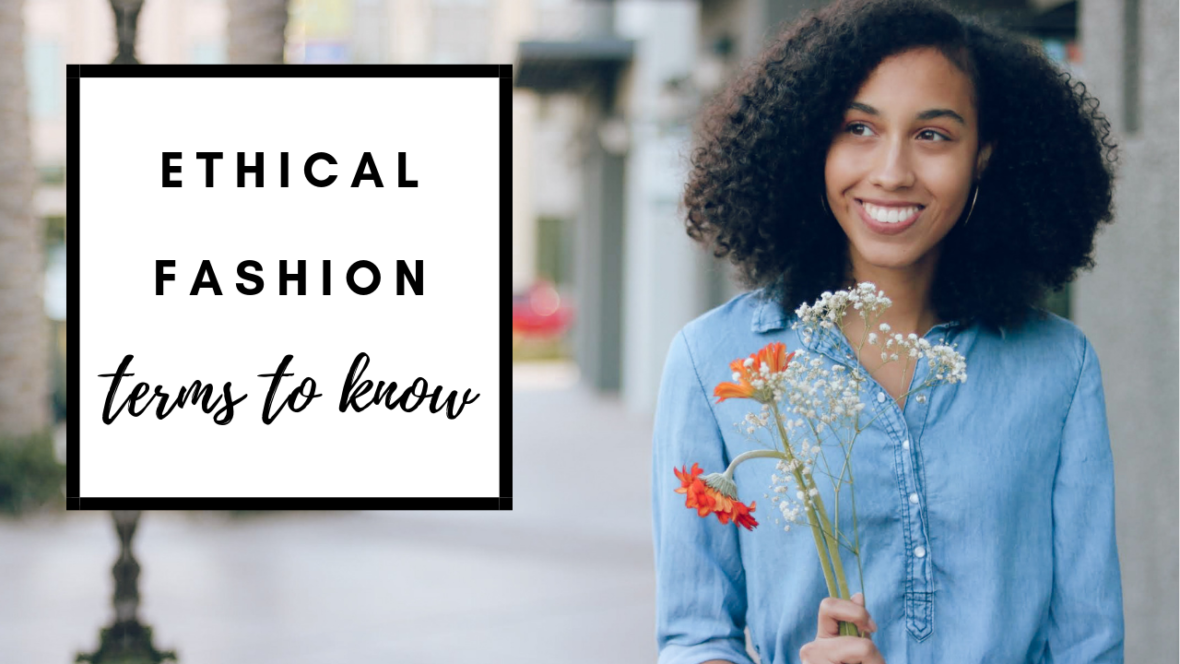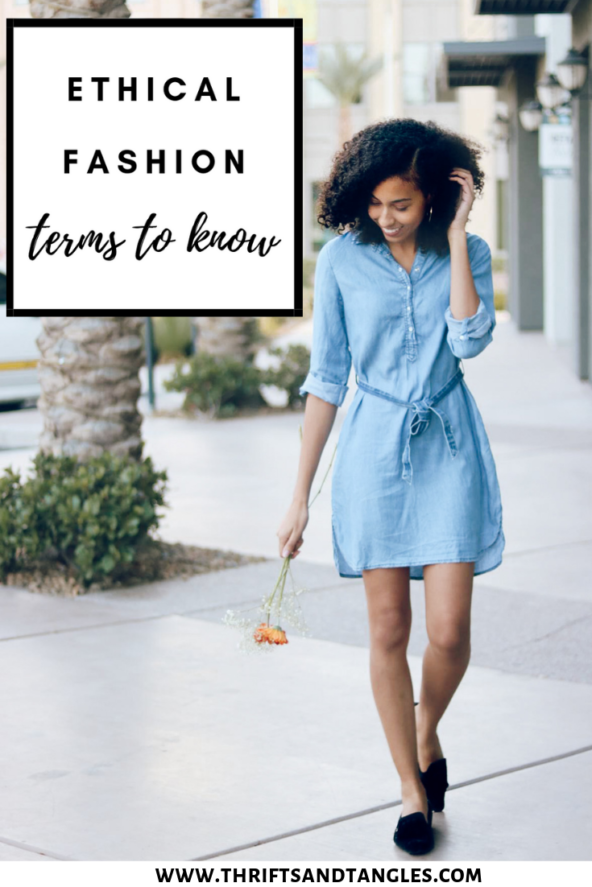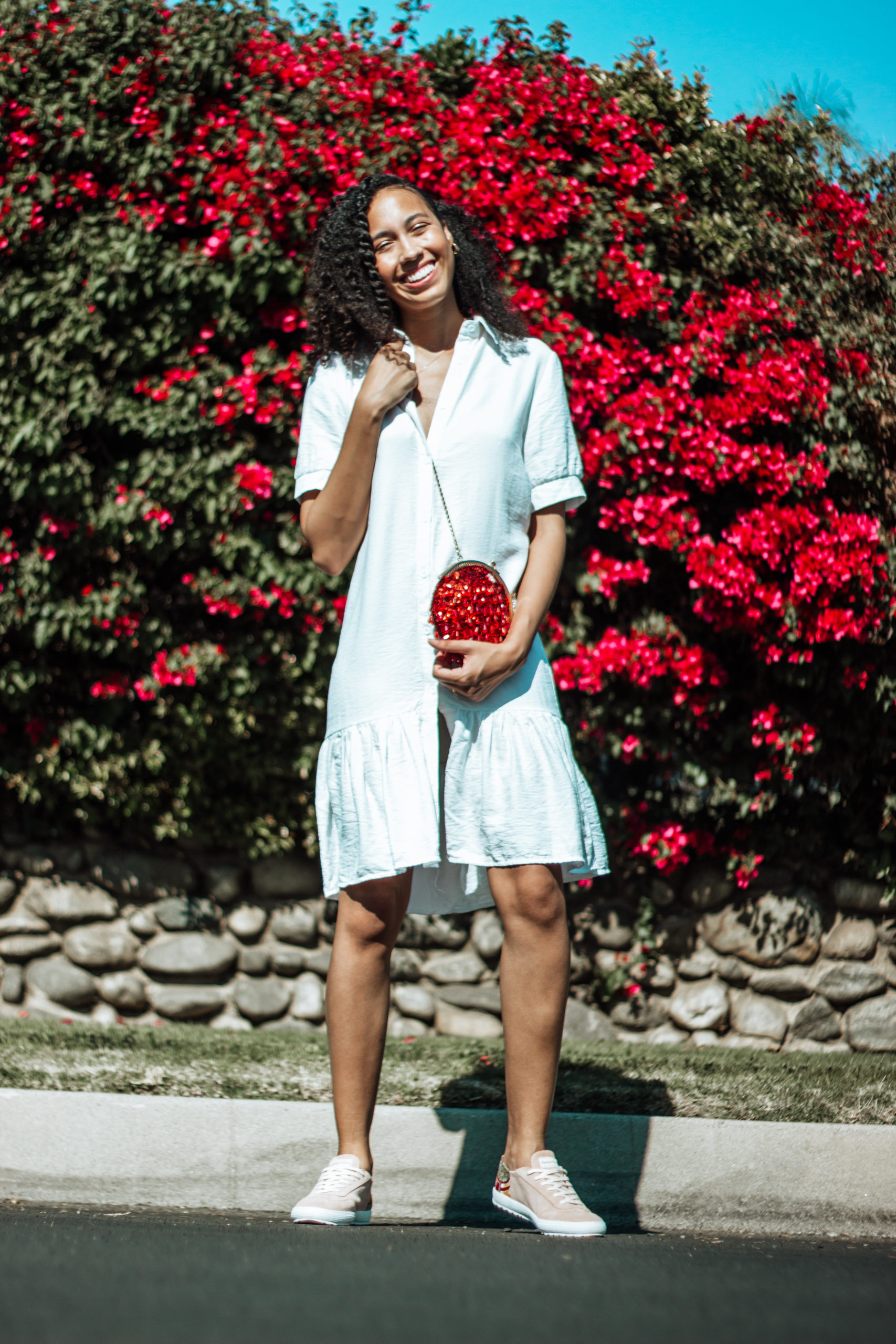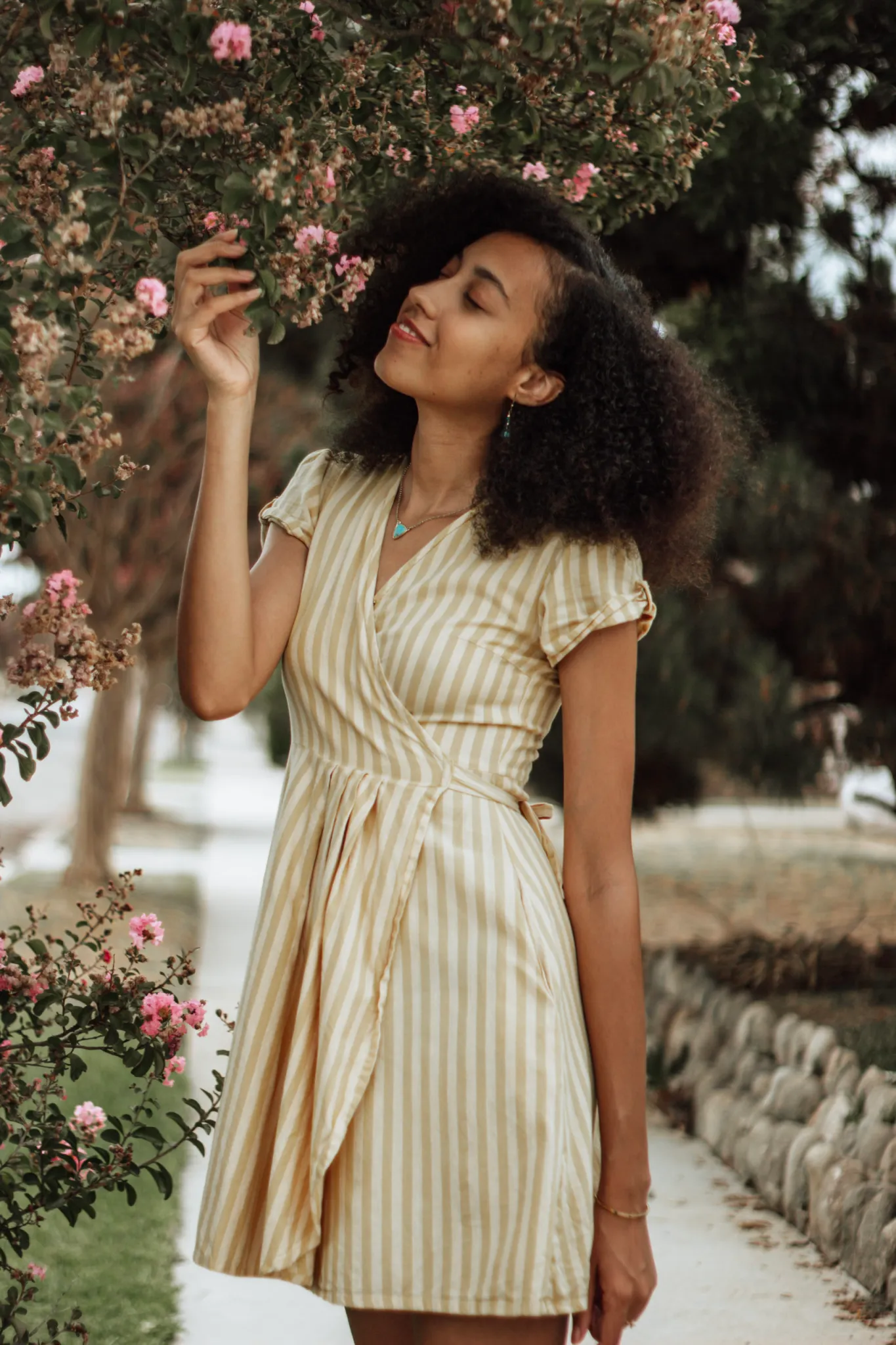Have you ever wondered what’s the difference between ethical and sustainable fashion? Or what is fast-fashion and why is it so bad? These were questions I asked myself at the beginning of my conscious consumer journey. Let’s dive into what 7 ethical fashion terms to know. These terms will help you familiarize yourself with the lingo used in the ethical fashion space.

Conscious Consumer
To be conscious is to be deliberate, intentional and aware; to be a consumer is to be a person who purchased goods and services for personal use. Quite literally a conscious consumer is a person who is intentional in their purchases.
A conscious consumer is an agent of change who considers the social, environmental, ecological, and political impact of their buycott and boycott actions.
Jaya Ramchandani
Conscious consumers ask important questions like: Who made this item? What resources were used to make this? How did this item impact local communities and the environment?
Eco-Friendly Fashion
Eco (short for ecology) examines how plants and animals interact with the environment. Eco-friendly fashion means clothing that causes little or no harm to the environment.
Eco-fashion also considers the health of consumers and the working conditions of people in the fashion industry.
STEP
Some examples of eco-friendly fashion are items made from organic/raw natural materials (i.e. cotton, linen, hemp) or recycled materials; items made with plant-based dyes; items produced with little water.
Ethical Fashion
Ethical fashion focuses on the social and environmental impacts throughout a garment’s lifespan. Basically, fashion and morals combined.
Ethical fashion considers…the people, animals, and plants who live in the area and do not necessarily work at the factory or mill but, are still impacted by it. The ethical treatment of workers and the local community.
Allison Calabrese
Ethical fashion can be thought of as an umbrella term which consists of eco-friendly fashion, fair trade fashion, sustainable fashion, and slow-fashion.
Fair Trade Fashion
Fair Trade Fashion supports income sustainability, economic empowerment, and community wellbeing for farmers, workers, and their communities.
Fair Trade fashion is fashion created with a goal of empowering marginalized people while paying them a fair wage and ensuring fair working conditions.
People Tree
Look for fair trade certified labels to ensure an item is fair trade.
Fast-Fashion
Trendy fashion that is being created quickly and inexpensively.
Fast fashion is a term used by fashion retailers to describe inexpensive designs that move quickly from the catwalk to stores to meet new trends…Today, it is not uncommon for fast-fashion retailers to introduce new products multiple times in a single week to stay on-trend.
Will Kenton
In order to keep costs low to meet consumer demand, fast-fashion companies use cheap materials, cheap manufacturing (chemical dyes, improper disposal of waste), and cheap labor. Also, the items are often not designed to last very long.
Slow Fashion
The opposite of fast-fashion. Shopping for quality, long-lasting, timeless pieces and slowing down consumption.
Slow fashion is also about returning to a personal relationship with fashion. One where trends and seasons don’t matter, but where your ethics and aesthetics seamlessly unite, and you can escape the stress of constant consumption, focusing on the style that truly appeals to you.
Emilia Wik
The slow fashion movement focuses on shifting consumers’ mindsets from quantity to quality. It is making a long term commitment to the clothes we buy, opting to repair worn items instead of replacing them.
Sustainable Fashion
Similar to eco-fashion, sustainable fashion is focused on causing little or no harm to the environment. Long-term efforts towards sustaining the environment.
Sustainable Fashion can be defined as a system in which supply, production, and consumption of fashion products have been designed in a way that ensures environmental, social and economic sustainability.
Rueen Amiriara
Sustainable fashion companies are committed to reducing carbon emissions, landfill waste, and/or water consumption levels.





Girl!! I learned so much reading this post! I admit, I have not been a conscious consumer for the most part. However, I do want to grow in this area! I feel like I’ve just been accustomed to shopping at places because of price and convenience rather than really considering how the products I purchase are made and if they’re made to last. I’m not sure if there’s a post somewhere on your blog already, but besides thrift shops, where are other places to get clothing and other goods? Also, when you do thrift items, does it necessarily matter if they’re from sustainable brands, or does the fact that you’re buying it thrifted make it ok?
That is awesome that you are interested in growing into becoming a more conscious consumer. I think a lot of us never really question how our clothes are made so cheaply and at what cost. I suggest watching the documentary the True Cost to better explain the sketchiness that is the fashion industry. I do not have a blog post on ethical places to shop, but I will definitely write one this month. I would suggest shopping on ThredUp (online thrift shop) or EBay for really good prices. But if you want to avoid secondhand altogether Pact, PeopleTree, and Everlane are really good (especially if a sale is going on). I am okay with buying fast-fashion pieces from the thrift store (as long as they are good quality) because my money is not directly supporting those companies and it helps extend the lifetime of those clothes. 🙂
I needed a clarification on current fashion terms like this post has given. The only terms I have really understood enough to use in conversation would be “slow fashion” and “fast fashion”. All others are so similar in definition that I basically umbrella them together. But thanks to you I think I get it now!
I do tend to just tell people that I’m a second-hand shopper but I think that term, too, comes with connotations of old worn out clothes. Have you done any posts clarifying stereotypes of thrifting? I would be so interested.
Hi! I’m glad this post helped clarify some of these terms for you. I actually was going to include secondhand fashion on this list but thought I would save it for another post. I would love to do a post clarifying stereotypes of thrifting. Thanks for the suggestion.
Awesome Post! Interesting to see the differences. One of my favourite brands Dorsu does a lot of “Ethical and Slow Fashion” items which I think is the perfect way to look at a wardrobe, quality and timeless pieces. Love it. I usually try to buy all of my basics from brands like these and then really cool “wow” kind of items from thrift stores. It’s a journey and there is a lot to learn!